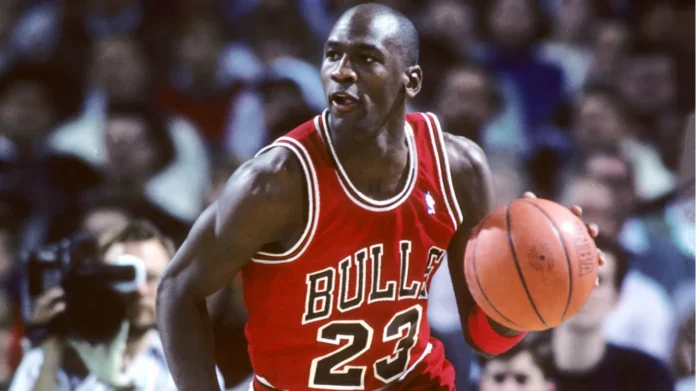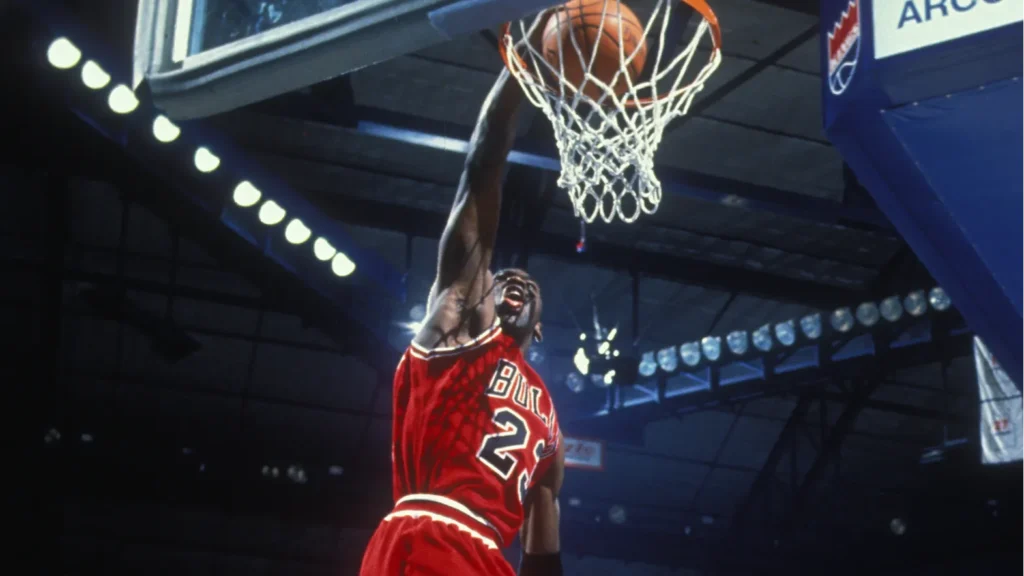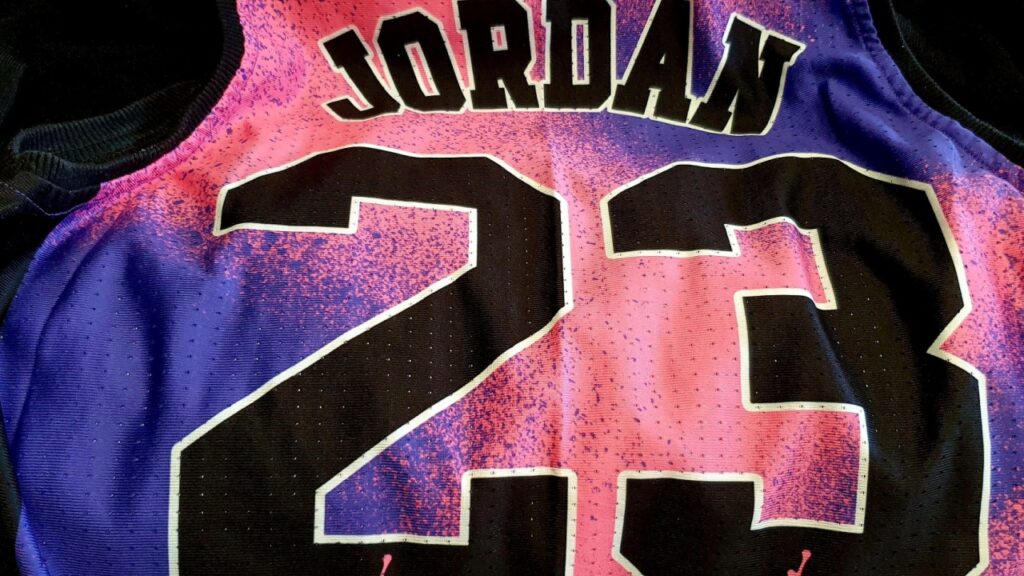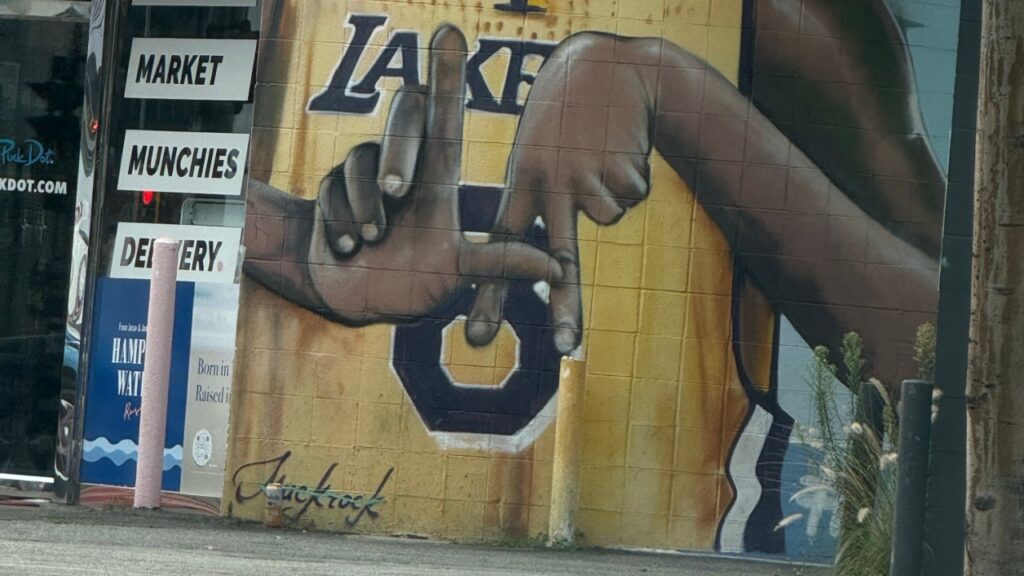
A jersey is more than just a shirt. In the NBA, some jerseys have become symbols that people wear with pride. They represent great players, big moments, style, and even culture. When you see a number, a name, or a team color, it can make you feel a certain way. This article looks at some of the most iconic NBA jerseys ever.
We’ll explore why they matter, how they crossed from being just sports gear into fashion, memory, and art. Then we’ll answer common questions and close with what truly makes a jersey iconic.
What Makes a Jersey Iconic
To understand why certain NBA jerseys become cultural icons, we need to look at what qualities they share. Here are the main things:
Legendary Player
The player wearing the jersey is special, dominant, charismatic, or deeply loved. Their achievements make the jersey meaningful.
Example: Michael Jordan’s #23 with the Chicago Bulls. People recognize this jersey worldwide because Jordan won six championships, earned five MVP awards, and became more than a basketball player, a global figure.
Kobe Bryant’s #8 and later #24 with the Los Angeles Lakers are others. He won five championships, inspired millions, and his jerseys now stand as symbols of his lasting legacy.
Memorable Moments
Great games, record-breaking performances, or emotional moments tied to that jersey make it unforgettable. When a player wears a jersey during a championship run or a historic comeback, its value and meaning rise.
For example, Jordan’s Bulls jersey from the 1996–97 season sold for $4.68 million because it was worn during his fifth championship run. Kobe’s “Leave a Legacy” commemorative jersey connects fans to his final game and the message he left behind.

Cultural Reach
Beyond basketball — when movies, music, fashion, and streetwear embrace a jersey, it becomes legendary in a new way. When people who don’t even follow basketball love and wear that jersey, it shows its cultural power.
The Chicago Bulls #23 jersey became a global fashion trend in the 1990s. Jordan’s Air Jordan brand helped raise its visibility even more.
Iconic Number / Number Retired
Some numbers become forever linked with greatness and are retired by teams so no one else can wear them. That honor turns jerseys into legends.
Michael Jordan’s #23 is retired by the Chicago Bulls (and honored by the Miami Heat), while Kobe Bryant’s #8 and #24 are both retired by the Los Angeles Lakers. Retiring a number shows how important that jersey and player are to the game’s history.
Examples of Iconic Jerseys

Michael Jordan #23, Chicago Bulls
Player Greatness: Michael Jordan is widely regarded as the greatest basketball player of all time. He led the Bulls to six NBA championships, earned five MVP awards, and dominated the 1990s.
Memorable Moments: He wore #23 in countless iconic games — playoff battles, Finals showdowns, and clutch comebacks. One jersey from his 1996–97 season sold for $4.68 million because it was game-worn and tied to his fifth title run.
Cultural Impact: The Red Bulls #23 became a worldwide symbol of style, success, and confidence. It showed up in movies, music videos, and streetwear, becoming part of the global fashion scene that defined the decade.

Kobe Bryant #8 and #24, Los Angeles Lakers
Player Greatness: Kobe Bryant played 20 seasons with the Lakers, winning five championships and inspiring generations with his “Mamba Mentality.”
Jersey Numbers: He first wore #8, then switched to #24 midway through his career — both numbers now retired by the Lakers.
Memorable Moments: His rookie-season jersey sold for around $7 million, making it one of the most valuable basketball jerseys ever.
Message and Legacy: The “Leave a Legacy” tribute jerseys remind fans of his work ethic and passion. Fans continue to wear his colors to honor his dedication and drive, both on and off the court.
Other Memorable Jerseys and Styles
While Jordan’s and Kobe’s jerseys may be the most famous, other designs have also left a major mark on basketball culture.
- Allen Iverson’s Philadelphia 76ers Jerseys — especially the black alternates from the early 2000s- became symbols of attitude, grit, and street style. They captured Iverson’s unique swagger during the 2001 Finals run.
- Toronto Raptors “Dino” Jersey (1990s) — The purple dinosaur design from the Raptors’ early years became iconic during Vince Carter’s rise. Its bold, playful look made it one of the most recognizable uniforms in sports, even for people who didn’t follow basketball.
- Throwback and Alternate Jerseys — Older designs brought back for special occasions or City Edition releases help fans reconnect with basketball history. Nostalgia plays a big role in keeping those uniforms popular and culturally meaningful.
Frequently Asked Questions
Q1. Why do people pay so much for old game-worn jerseys?
A: Because they connect fans directly to history. If a jersey was worn in a big game by a legendary player, it becomes more than fabric — it’s a piece of culture. Game-worn jerseys are rare, and their limited supply makes them valuable. Jordan’s 1996–97 Bulls jersey, for example, sold for millions because it was worn during a championship season.
Q2. Do the numbers really matter?
A: Absolutely. Some numbers — like #23 (Jordan), #8 and #24 (Kobe), #33 (Larry Bird, Kareem Abdul-Jabbar), and #32 (Magic Johnson, Karl Malone) — instantly bring certain players to mind. When teams retire those numbers, it ensures their legacy lives on forever.
Q3. Can a jersey be iconic even if the player wasn’t the best ever?
A: Yes. Sometimes, design, era, or team identity makes a jersey famous. For example, the Raptors’ dinosaur jersey became iconic because of its unique look and nostalgic charm, even though the team wasn’t a consistent powerhouse then.
Q4. How do jerseys become part of fashion or streetwear?
A: Celebrities, musicians, and designers help popularize them. When a jersey appears in a hit music video, movie, or fashion shoot, more people see it as stylish. The Bulls #23 became a streetwear staple in the 1990s and continues to appear in retro fashion today.
Q5. Are there recent jerseys becoming iconic already?
A: Yes. Jerseys worn by players like LeBron James and Stephen Curry are already gaining legendary status as they break records and win championships. Modern “City Edition” and special-cause jerseys also catch attention quickly because they connect sports, fashion, and social meaning.
Conclusion
- Some NBA jerseys become cultural icons because they represent more than just a team or a player.
- They carry stories of greatness, emotion, and unforgettable moments that fans remember for decades.
- These jerseys are woven into music, movies, and fashion, becoming part of culture beyond basketball.
- They serve as reminders of eras that changed the game and shaped sports history.
- Examples include:
- Michael Jordan’s #23 Chicago Bulls jersey — symbol of excellence and global influence.
- Kobe Bryant’s #8 and #24 Los Angeles Lakers jerseys — symbols of determination and legacy.
- Allen Iverson’s black Philadelphia 76ers jersey — known for attitude, individuality, and street style.
- Toronto Raptors’ purple “dinosaur” jersey — famous for its bold design and 1990s nostalgia.
- A jersey becomes iconic when it combines three elements:
- A legendary player
- Unforgettable moments
- Cultural reach beyond the court
- Over time, these jerseys evolve into pieces of basketball history, representing greatness, inspiration, and the memories fans never forget.
Read More
- Best NBA Finals Moments In History
- How Street Basketball Influenced NBA Culture
- NBA’s 1992 Dream Team vs. the 2008 Redeem Team And Their Lasting Impact
This article was made with AI assistance and human editing.


